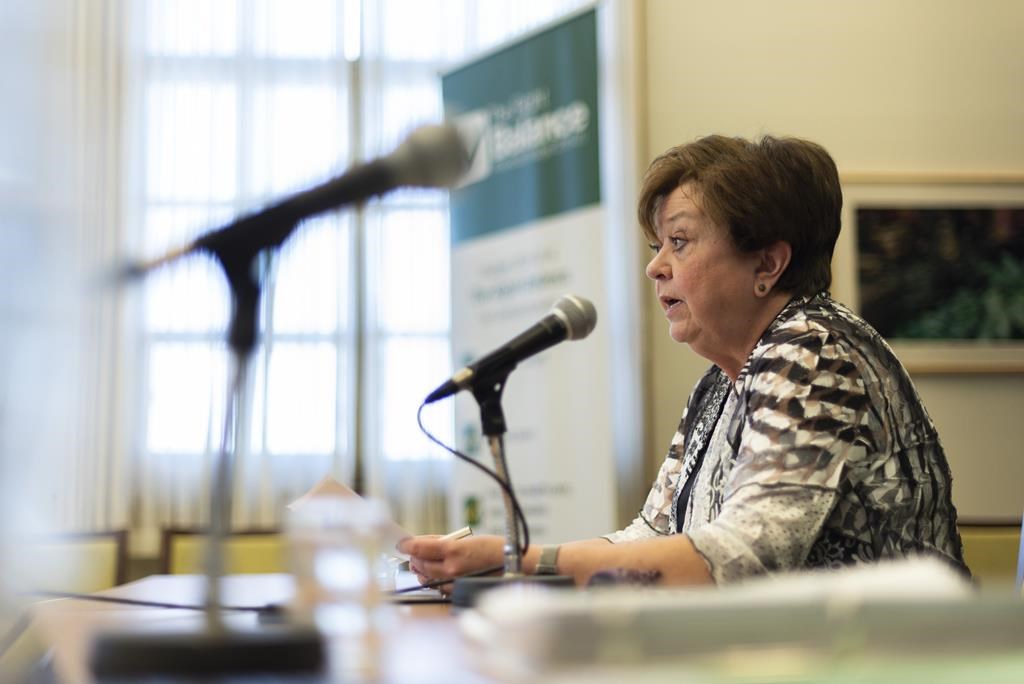Despite trade challenges and a difficult year for agriculture, the Saskatchewan government is increasing its surplus projection to $37.4 million.

This is a $3 million surplus projection increase from the initial budget projection. The finance ministry said it is feeling more optimistic about provincial finances than the first quarter update when the surplus was downgraded to $25.8 million.
Finance Minister Donna Harpauer said she is happy the budget is where it is, but acknowledged the surplus is still slim. She said the government`s goal of having a surplus at the end of the fiscal year is not a sure thing.
The finance ministry will be paying close attention ongoing global economic concerns, like the trade dispute between the U.S. and China plus the Brexit situation.
Locally, agriculture royalties are a question that doesn’t yet have an answer. The ministry anticipates the second largest harvest in the province’s history, but a wet harvest season is expected to downgrade crop quality. The ministry expects to have a better idea of crop quality in December.
On the revenue side, the province is expecting $15.4 billion — a $329.3 million increase from the budget.
- ‘Shock and disbelief’ after Manitoba school trustee’s Indigenous comments
- Invasive strep: ‘Don’t wait’ to seek care, N.S. woman warns on long road to recovery
- Grocery code: How Ottawa has tried to get Loblaw, Walmart on board
- ‘Super lice’ are becoming more resistant to chemical shampoos. What to use instead
Officials said the revenue increase is driven by an extra $170 million in transfers from the federal government, a $69 million increase in expected non-renewable resource revenue and $67.9 million more coming in from government-operated businesses.
The increase in federal transfers was initially announced in August’s first-quarter fiscal update.
Government business revenue is driven by an $86.7 million increase in Workers’ Compensation Board income and $28.4 million from the Saskatchewan Auto Fund. The auto fund increase is attributed to lower damage and injury claims.
However, SaskPower and SaskEnergy income forecasts dropped by $30.1 million and $17.3 million, respectively. Both decreases are chalked up by officials to lower than expected sales.
The expense side of the balance sheet is now at $15.3 billion, climbing $326.3 million from the budget.
This is mostly due to a $285.2 million increase in pension expenses, with $228 million falling into the Teachers’ Superannuation plan.
Health care costs rose by $35 million due to the higher use of healthcare services.
Public debt is at $21.4 billion, a $302 million decline from the spring budget. This is primarily due to a $315 million drop in SaskPower’s debt. However, The Saskatchewan Health Authority saw its debt-load grow by $25.4 million.
People are being left behind in the government’s goal to have a surplus at the end of the fiscal year, according to opposition finance critic Trent Wotherspoon.
He said the government should be putting extra funds into education in order to address issues like crowded classrooms. Wotherspoon also called on increased financial resources for mental health and addictions services to address crystal meth and northern suicides.
“I very much support fiscal prudence and making sure you have sustainability in your finances, but where we’re at right now and because of the choices of the Saskatchewan Party and the hole we’re in, the deficit in our classrooms, we need those investments right now,” Wotherspoon said.
“Certainly that could grow the deficit this year, but those are dollars that are needed.”
Going forward, Harpauer said ministries are beginning to bring their budget requests forward for the 2020-21 budget.
The back-to-balance plan included the expansion and increase of PST to six per cent. Even with the projected surplus still in place, Harpauer said consumption taxes likely will not go down anytime soon.
“I would say as long as we have the challenges we have in our trade markets and we can’t get our oil to port, it will be here for a while. If any of those logger jams lift, I think our province is poised to see extreme growth once again,” Harpauer said.





Comments